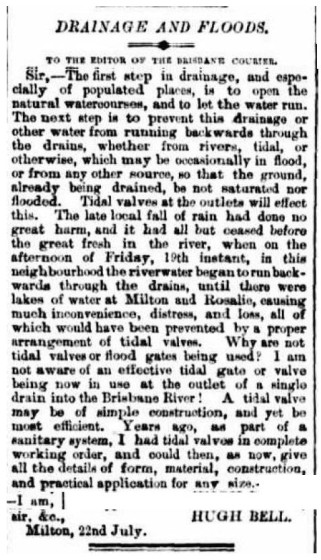In the fourth episode of Uncovering Langsville Creek, I told the story of Elizabeth Dale, who on 31 January 1905 drowned in a waterhole in the Toowong Cemetery. I was intrigued by the notion that there was once a waterhole in this otherwise dry and barren land, so I set about trying to determine its location. I failed dismally, but at least got some mileage out of reporting my misadventure. Thankfully, two readers took pity and provided me with some new leads. I am glad to report that having followed those leads, I can now reveal where Elizabeth drowned. I would only be more glad if no-one else had figured it all out before me.
A wild ghost chase
My first attempt to find the site of the waterhole was as optimistic as it was misguided. The only clue I had was that the waterhole was somewhere near the graves of Elizabeth’s husband and brother. Or at least, that was the inference I drew — incorrectly, it turns out — from statements given at the inquest into Elizabeth’s death saying that her body “was found off a pathway between her husband’s and brother’s graves” and that “the pool was about 20ft. from the pathway”. I assumed that the waterhole and Elizabeth’s husband’s and brother’s graves must have all been close to one another, and that I could deduce the location of the waterhole by finding the graves of a Dale and a Dodd (I didn’t even know their first names) in a low-lying part of the cemetery.
That mission was never likely to succeed. Many of the headstones in the low parts of the cemetery — especially those from the 19th century — were unreadable or missing altogether, and unless I spent all day looking, I was never going to check all of the readable ones anyhow. On the bright side, I had a pleasant afternoon and got some exercise. I felt a little foolish, however, when a reader named Ann Stephens pointed me to a much smarter way of finding graves in Brisbane: the City Council’s Grave Location Search, which enables you to find a grave by specifying the person’s name and the year they were buried. It’s kind of like a Yellow Pages for the deceased. Continue reading

